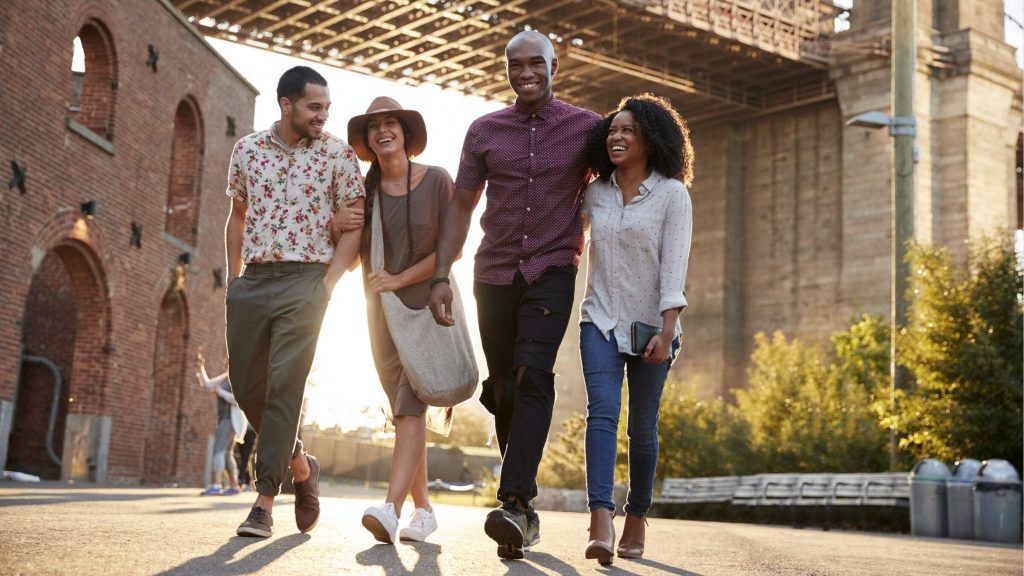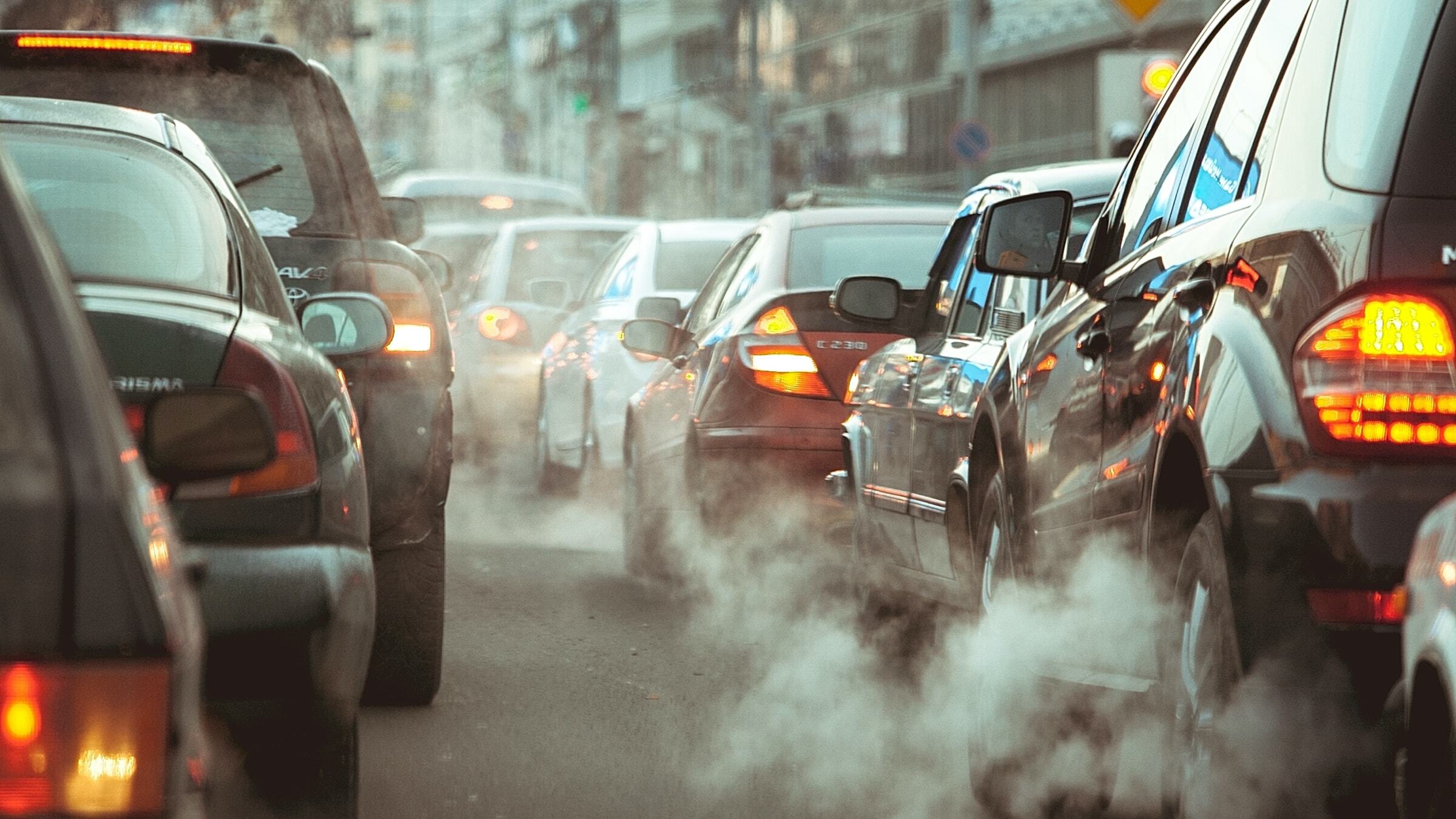There’s a problem and it’s hiding in plain sight in our cities. Can you spot what it is?
At Possible, we never campaign on an issue we don’t have a solution for, and that’s where our new Car Free City campaign comes in.
Some people might gasp at the term “car free” – it comes as a shock when over the past century we’ve taken for granted that grime, pollution and congestion are just a part and parcel of living in the urban jungle. But our cities are about more than just the rat race – they’re about communities, they’re about homes, they’re about lives. And the current way that our cities are structured means that we accept the harm that comes with cars.
What’s the problem with cars?
Here are 6 reasons why mass private car ownership in our cities is more of a burden than a blessing:
1. The climate crisis
The first and perhaps most catastrophic problem is that we’re in a climate crisis. To meet our commitments to the Paris Agreement, we need to drastically reduce our emissions. Transport emissions are the largest source of CO2 emissions in the UK, and within that, private cars are the biggest single source of transport emissions. Transport emissions have grown from less than a fifth (19%) of UK greenhouse gas emissions in 1990 to more than a third (34%).
2. Collisions
Traffic collisions cause over 100,000 casualties, and 20,000 deaths and serious injuries annually. The car is the world’s “deadliest animal” (1.3m killed each year globally). ROSPA have expressed concern that the number of people aged over-60 killed on British roads (including those killed whilst behind the wheel) has been rising since 2010. Reducing the speed limit to 20mph on all urban roads would reduce the number and severity of road collisions and take pressure off the NHS.
3. Toxic air
Beyond collisions, cars are responsible for toxic air. It’s killing us, literally. 40,000 people prematurely die annually from the effects of air pollution. Research has shown that particulate matter, caused by motor traffic, affects all major organs of the body. City children are constantly exposed to toxic air and have reduced lung capacity. All vehicles – even electric and hydrogen ones – produce non-exhaust emissions (particles from brake, tyre and road surface wear), so the answer is not newer cars, but fewer cars.
4. Public space
The COVID-19 lockdown, and the closure of parks and urban green spaces, highlighted how access to outdoor space is a luxury denied to many people, particularly those from low income households living in tower blocks. We currently give over swathes of public land to the storage of private cars, which spend over 95% of the time parked!
5. Inequality
This is not just a climate justice issue; this is also a social justice issue. The most deprived neighbourhoods in our cities have the lowest levels of car ownership, yet they are often the worst polluted, with residents hemmed in by through-traffic and parked cars from outside the area.
6. Congestion
Our cities were not designed to accommodate the number of vehicles that are currently on the road. Unavoidable congestion affects the speed and efficiency of emergency services, buses and taxis. London drivers waste 227 hours a year stuck in traffic, travelling at an average speed of 7mph. The spillover into residential streets (rat-running) causes frustration and aggression towards other drivers and road users.
What can we do?
Our Car Free Cities campaign in Birmingham, Bristol/Bath, Leeds/York, and London, aims to help local communities reimagine their own neighbourhoods where car dependency is a thing of the past; and to co-design and deliver real-world, bottom-up practical solutions that reduce motor traffic dominance in the short term. It will also make our cities lovelier. Earlier this year, lockdown restrictions on travelling to work gave us a glimpse of how things can be when we are not battling through the smog and noise of persistent traffic.
We know that most city-dwellers want roads made safer for cycling and walking. This consultation in Leeds, asking for suggestions to improve roads has received over 25000 comments and suggestions. The debate about interventions like Low Traffic Neighbourhoods is often hijacked by a loud minority who are resisting any and all measures to curb car use. We intend to give a voice to the ‘silent majority’, including children, who have a human right to a healthy future, and a fair share of our precious resources.

We will engage people in our cities in grassroots and strategic climate action in their streets and communities to show how road space can be used differently. For example, we can repurpose parking space into parklets, making beautiful communal seating, play areas, bike lockers, e-bike charging points, and so much more.
We will use citizen science to provide data to demonstrate the level of through-traffic on our streets, and push for measures that stop rat running. Strategic positioning of modal filters effectively prevents through-traffic so that people can safely cross, walk and cycle. In the same way that widening roads sucks in more traffic, putting roads on a diet will, in the long term, reduce the number of car journeys.
We will encourage people to appreciate – even love – what they can access via walking in their neighbourhood, making them less dependent on cars.
We will celebrate the ways that national and local government – for example in Waltham Forest – have taken steps to cut car dominance, and make the case for more interventions.
The transport systems we have today may seem fixed and unchangeable but we have to remember that they are the result of deliberate policies that have nudged us down a particular path. New policies can give us alternate systems that will allow us to thrive in the 21st century. This campaign will co-produce bold visions of what our cities could look like without cars, and is a first step in demanding a brighter future for us all.
Guest blog by Possible, a charity supporting people and groups across the UK doing bold, beautiful things to tackle climate change. Check out their amazing work here.



